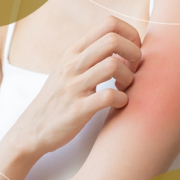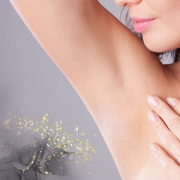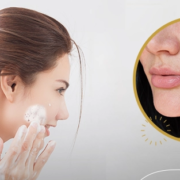Period Skincare for Women
How many times have you heard women share their woes and concern about a breakout or extra skin sensitivity; right before or during their menstrual cycle?
Perhaps you and your friends often have conversations about how you change your skincare routine during PMS due to hormonal changes in the body.
Our skin moves to the ebb the flow of our hormonal chemistry and is more likely to change its appearance or physical sensations near the period cycle.
The menstrual cycle can impact mood, feelings, energy and skin. The increase and decrease of certain hormones throughout the month can affect how our skin reacts. But we must keep in mind that everyone’s skin may react differently to inner body changes and the environment.
PMS Skin & Breakouts: Best Friends Forever
When your body nears pre-menstrual days, it tends to produce less hormones. We hear about hormonal fluctuations during the menstrual cycle, namely estrogen, testosterone and progesterone. Many people find their skin oilier than usual before their period which maybe caused due to more sebum being released. This also traps dirt and dead skin therefore causing inflammation.
As estrogen levels drop it may also lead to sensitivity dryness and dullness of the skin. Some women have observed that their pigmentation is more apparent during these fluctuations because it reacts more strongly to the environment than other days. Others think it could be hormonal triggers that change the complexion. Dermatologists are still debating over scientific studies about the connection between skin and the menstrual cycle.
These hormonal changes may trigger other skin conditions such as dermatitis or psoriasis. If you are experiencing breakouts, inflammation and excessive sensitivity in your skin along with a change in energy levels; don’t worry because it might be that time of the month!
What Can You Do When All Hell Breaks Loose?
One of the most important things you can do in order to take care of yourself during PMS; is to acknowledge that your body is going through a flux of hormonal chemistry. Make sure you practice self-care and make comfortable adjustments that can ease this hormonal journey. There are a few things you can do to minimize inflammation, breakouts, dryness and sensitivity:
Eat Well, Sleep Well & Repeat
Be mindful of what you eat to catch up with the hormonal train choo-chooing inside your body. Surely, genetics play a role in how our skin behaves so this might not apply to everyone. However, it is better to be cautious by avoiding inflammatory foods. It is always good to consume sufficient amount of water every day. Some women find it calming to have green tea or spearmint tea especially during days where they are experiencing a surge in androgenic hormones.
Many women experience low mood and energy levels therefore it is favorable to rest whenever you feel the need to. Lack of sleep will not help with inflammation, breakouts or fatigue. Overall, it is beneficial to eat well and rest the body when hormones are acting up.
Avoid Harsh Products
When the skin barrier is sensitive and prone to stressors from the external environment, it is best to adopt a non-abrasive approach. Avoid invasive procedures and any physical exfoliants to curb potential irritation. It is best to stay away from laser, scrubs or tools that could trigger more problems when the skin is sensitive.
Keep It Gentle: Spot Treatment
Try to opt for a gentle cleanser and a simple skincare routine. If your skin feels oilier than usual and you’re facing a breakout, then use spot treatments for that particular area. There are some great products that use zinc and other anti-inflammatory ingredients like green tea or chamomile to soothe the skin and avoid inflammation.
I have also seen others use glycolic acid or salicylic acid two weeks in advance, (before the onset of their period). They are usually too harsh for my skin so I avoid that route. But then again, everyone’s skin reacts differently. Although I would always advise to patch test especially towards the week your period is about to start.
Lipids: Say Goodbye to Dryness
Lipids keep our skin barrier intact and prevent external stressors from aggravating our epidermis. Lipids include fats, cholesterol and ceramides. They are essential in maintaining our skin health and avoiding dryness. If you experience dryness during the first few days of your period, make sure you use a suitable moisturizer.
Any Last Thoughts?
Remember to take care of your soul too. It helps to make a self-care kit during your period, maybe throw in a soothing moisturizer, comfortable pillow and a few green tea leaves?
Tracking your period cycle could be a helpful way of predicting what your skin might need. Reach our dermatologists for better skincare!
Call our Patient Care Lines: (+632) 7-368 5238 l (+63) 917 862 7454 l (+63) 921 217 0517 for inquiries, questions, and appointments or talk to our consultants via LiveChat at https://shinagawa.ph so we can address and answer them for you.






